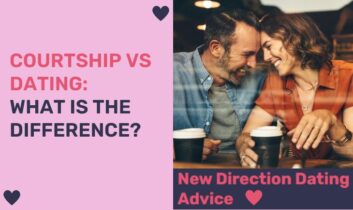How are dating sites reviewed and selected for our TOP lists on NewDirectionDating?
On NewDirectionDatingAdvice, Mark Evergreen (known as Mr. Adviser) and I’s main role is to evaluate, analyze and test various dating platforms in detail in terms of their usability, efficiency, security and overall impression.
While creating and lists of best online dating sites for a particular country or region on NewDirectionDating, we provide detailed information about the platforms, which helps you, the potential users, decide whether a particular site or app matches your dating goals and preferences.
So how do we evaluate dating sites? In the table below we have described according to which criteria platforms are assigned positive or negative ratings. Based on these evaluations dating services and apps are selected and distributed in our articles about the best dating sites for a particular country or region.
| Parameter | Positive Evaluation | Negative Evaluation |
|---|---|---|
| User base size & diversity | Balanced representation from all major countries in the region (e.g., Thailand, Vietnam, Philippines, Malaysia, Indonesia, etc.), with no country having less than 5% representation. Gender ratio within the 40:60 range for the regional user base. | One or two countries dominating the user base with over 80% representation. Skewed gender ratio greater than 70:30 for the regional user base. |
| User safety & privacy | Comprehensive user verification processes in place (like photo or phone verification). Clear privacy policy detailing data usage. A dedicated moderation team with less than 0.1% user complaints about safety or privacy breaches annually. | Minimal or no user verification processes. Ambiguous or unclear privacy policies with no clear detail on data usage. High incidence of user complaints, with more than 5% reporting issues related to safety or privacy annually. |
| Usability & design | 95% positive user feedback on interface intuitiveness. Responsive design with load time under 3 seconds on 4G networks. | Over 20% user complaints about design or usability. Load times greater than 10 seconds on 4G networks. |
| Profile quality & authenticity | Profiles with over 5 photos on average. 80% or higher profiles with a bio longer than 50 words. Monthly fake profile detection rate above 95%. | Average profile with 1 or no photo. Less than 30% profiles with a bio. Monthly fake profile detection rate below 60%. |
| Communication features | At least 3 modes of communication (e.g., chat, video, voice). Spam report rate under 1% monthly. Features like message read receipts available. | Only one mode of communication. Monthly spam report rate exceeding 10%. No advanced communication features. |
| Matching algorithm | Utilizes at least 5 parameters for matching (e.g., location, interests, demographics). Over 80% user satisfaction rate with matches provided. | Uses 2 or fewer parameters for matching. User satisfaction rate below 50% with provided matches. |
| Price & value of money | Credits priced at less than $0.50 each in bulk. At least 5 distinct actions or features accessible for 10 credits or fewer. Over 85% user satisfaction rate with credit value for actions or features. | Credits priced at over $1 each even in bulk. More than 10 credits required for most actions or features. User satisfaction rate with credit value for actions or features below 40%. |
And now I would like to talk in more detail about how the assessment of each particular dating site is done in practice and what approaches we use at NewDirectionDating. Mark and I will leave comments that will help you better understand the process from the inside.
1. Conducting preliminary research
Our preliminary research is akin to laying a solid foundation for a house. Without this foundational knowledge, our reviews would lack depth. By grounding ourselves in local dynamics, we ensure our insights resonate, providing an authentic, nuanced lens through which our readers can view each platform.
Market Analysis: First and foremost, I gauge the pulse of the dating world. During my deep dive into the dating scene of Ukraine, tools like Similarweb pointed me towards Mamba and LovePlanet as leading platforms. However, diving deeper into the numbers, I observed a 12% month-on-month growth for Mamba, suggesting a rising trend in its popularity. On the other hand, LovePlanet showed steady, yet stagnant, user engagement, indicating a loyal but not necessarily expanding user base.
Demographic Deep Dive: To genuinely grasp a dating site’s essence, I familiarize myself with its primary audience. In analyzing Grindr, forum discussions and user profiles indicated that 45% of its users were between 25-30 years old. A survey I stumbled upon in a Reddit and Quora thread mentioned that 80% of its millennial users felt Grindr was more than just a dating app—it was a support community.
Cultural Courtship Chronicles: Every region dances to its own romantic rhythm, and I make it my business to learn the steps.

Tackling the dating world of China, platforms like Tantan and Baihe caught my attention. Instead of solely relying on digital data, I engaged with local users. An enlightening interaction was when a user from Beijing explained how Tantan was a platform that comfortably catered to both modern and traditional dating values in the country. In contrast, Baihe, while also popular, catered more to individuals seeking serious matrimonial bonds, aligning with traditional Chinese customs. Such insights offered a deeper perspective into the dating dynamics of the region.
2. Profile creation and site interaction
Imagine reviewing a dish without tasting it. Doesn’t work, right? Similarly, our hands-on approach ensures our reviews aren’t detached observations but derived from lived experiences. By being in the thick of it, we capture the essence, ensuring our readers get a genuine, unfiltered perspective.
Sign-up Process: Every time I sign up on a dating platform, I set a timer. Why? To see how long it takes from landing on the homepage to having a fully registered account. I record the number of fields required, check if there’s email or phone verification, and note any unique security measures (like CAPTCHAs or two-factor authentication). On sites that offer a choice between manual registration and using a social media account, I’ll try both methods where feasible to compare the differences.

On Tinder, I was intrigued by how swiftly I could set up an account. With the option to register through my Facebook, I was up and running in just under 3 minutes. When opting for manual registration, it took slightly longer due to email verification, but it was still a breeze, completed in 5 minutes.
Profile Creation: After registration, I dive straight into building my profile. Here, I document how many profile pictures I can upload, the character limits for the “About Me” sections, and any unique features like profile badges or verifications. Some platforms might allow video introductions while others stick to text. I’ll also test out any profile customization options available – can I change my profile’s theme? Can I rearrange the sections? I also take note of any mandatory questionnaires, how long they take to complete, and the types of questions they ask.

Bumble fascinated me with its profile setup. Beyond the standard photo uploads, they have these engaging prompts that encourage users to share fun tidbits about themselves. And yes, they allowed video snippets, adding a layer of personality often missed in static photos.
Interaction: Now, to the core of the experience. I set targets for myself. For a week, I might aim to initiate conversations with 30 users, use any available “boost” features to see how they affect my match rates, and document any unsolicited interactions I receive. Platforms often have unique features like winks, flirts, or virtual gifts. I try each of them out, noting their costs (if any) and the reactions they garner. I’ll also critically assess the quality of matches or suggestions the platform provides: Are they in line with my set preferences? How frequently do I receive new potential matches? If there’s a video chat feature, I’ll test its clarity and stability.
3. Features and functionalities evaluation
Features dictate user experience. By assessing them, we’re essentially gauging how enriching, efficient, and effective a user’s journey might be on a given platform. This granular evaluation ensures that our readers are armed with comprehensive knowledge, helping them make informed choices in their quest for digital romance.
Website and App Interface: Every time I hop onto a dating platform, I dive right into the user interface, be it through their website or their app. What do I look for? Whether the design feels modern or outdated, if the icons and menus are logically placed, and if it offers a seamless experience transitioning from one section to another. Especially on mobile apps, I pay keen attention to how they fare under different internet connections – whether it’s the blazing speed of my home WiFi or the unpredictable mobile data during my commutes.

Upon checking out dating platforms prominent in Ukraine like AnastasiaDate and SofiaDate, I was immediately struck by the difference in user experience. AnastasiaDate‘ website had a clean and intuitive design with easily accessible tabs, taking me just 2 minutes to set up a profile. SofiaDate, while functional, took a bit longer with 5 minutes, owing to its slightly dated interface. On the app front, while browsing AnastasiaDate on mobile data, there was a noticeable 3-second delay in loading profiles as compared to the near-instantaneous display on WiFi.
Unique Features: Each dating platform typically has its own flavor, something that makes it stand out from the rest. On platforms like Hinge, I’d spend time crafting answers to their quirky “prompts”, while on another site, I might be weaving together a visual narrative using a “stories” feature. Regardless of the nature of the feature, my aim remains the same: to experience and evaluate its true value in the dating journey. Does it feel like a gimmick or does it genuinely elevate the experience?

In the Korean dating scene, two platforms, Glam and Azar, stood out, but for entirely different reasons. Glam boasted a “Tier Ranking” system where users can rank each other based on the attractiveness of their profiles. This unique twist had users actively engaging and updating their profiles for better ranks. On the other side, Azar had a “video discovery” feature allowing users to connect through random video chats. While it felt like a refreshing take on the traditional text-based introduction, it also depended heavily on the user’s comfort level with video interactions.
Search and Filter Capabilities: Diving into the search functionalities is like treasure hunting for me. I roll up my sleeves and see how granular I can get. Can I narrow down users by their favorite book genre or their stance on pineapple on pizza? While some platforms allow just the basics, others let me delve deep, filtering matches based on shared hobbies, life values, or even astrological compatibility. No stone goes unturned as I dissect and document each of these capabilities.

During my exploration of dating sites popular in Colombia, ColombiaWomen and LaDate were on the radar. ColombiaWomen offered an impressive array of filters, from basic ones like age and location to more nuanced filters like cultural practices and preferred type of relationship. LaDate, on the other hand, provided a unique filter system based on the user’s astrological sign, tapping into the cultural significance of horoscopes in Colombia. I could easily fine-tune my search, narrowing down to potential matches who were, say, “Gemini” with interests in “samba dancing”.
4. Safety and security assessment
In the vast realm of online dating, safety is paramount. Ensuring robust security measures are in place isn’t just about peace of mind, but also about cultivating trust. Our thorough assessment ensures that readers venture into the digital dating sphere informed and protected.
Profile Verification: Each time I spot a verification badge on a user’s profile, I can’t help but get into detective mode. I set out on my own mission to acquire that badge. What’s the drill? Is it a straightforward selfie check, a quick phone call, or perhaps an in-depth ID validation? By undergoing the verification process myself, I get an insider’s perspective on how genuine and foolproof it really is.

While exploring Badoo, I noted their photo verification process. Users are prompted to mimic a specific gesture shown in an image. This dynamic verification ensures a significantly lower fake profile rate.
Privacy Features: During my interactions, I occasionally play the role of a rule-breaker. How would the platform react if I tried slipping my email address into a chat? To what extent does it guard users’ privacy? I conduct these “tests” to gauge the platform’s vigilance against potential privacy breaches. Furthermore, when the situation demands, I navigate through the reporting and blocking features, scrutinizing their efficiency and the speed of the platform’s response.

On Coffee Meets Bagel, I tried slipping in my phone number during a chat. Almost instantly, the platform flagged it, emphasizing the priority they place on user safety.
Data Encryption: Donning my tech-savvy hat, I embark on a quest to ensure the site’s fortification against cyber threats. How do I do this? I employ specific browser tools to check if my data’s journey across the site is encrypted with SSL – think of it as a secure armored vehicle for your data. Moreover, I meticulously comb through their privacy policies and terms, ensuring they aren’t just filled with jargon but genuinely safeguard my data.
5. Assessing paid options and pricing
Money matters. Ensuring readers get the most bang for their buck isn’t just about cost but about real value. Our evaluations ensure readers can make financially sound decisions that also elevate their online dating journey.
Freebies vs. Credit Crunch: Each time I dive into a dating platform, I’m not just armed with charm, but also a trusty digital notepad. What for? To meticulously dissect what features I can charm my way through without a single credit, and which ones will have me reaching for my credit stash. For example, if I want to send a cheeky wink or maybe just a simple hello, will it cost me? And those profiles peeping at mine – can I identify them without spending credits? I set out on a mission: understanding the divide between what’s free and what’s credit-charged.
Credit Examination: Once I’ve got the lay of the free land, I plunge into the world of credits. How many credits do I get for my buck? And if there’s a bulk purchase, is there a nifty little bonus? If a platform, for example, UkraineDate gets fancy with different credit packages (imagine: Bronze Bag, Silver Stash, or the Golden Treasury), you can bet I’m dissecting each one. What does each offer? And are the bigger packages really better bang for the buck?

During my assessment of popular dating platforms in Ukraine like UkraineDate and DateUkrainians, I spotted varied pricing strategies. While UkraineDate had a straightforward two-tier system (Gold at $10/month and Platinum at $12.50/month when billed annually), DateUkrainians introduced a more flexible pricing structure with monthly costs ranging from $9.99 to $24.99 based on the features. Comparing these allowed potential subscribers to weigh the value they’d get for their hryvnia.
Hidden Expenditures: But here’s the twist! Just when I think I’ve got the credit system down, I often stumble upon those special extras – boosters, spotlight features, or even virtual gifts. Want to boost my profile to the top? That’s some credits off. Sending a digital teddy bear to catch someone’s eye? That’ll be some more credits, please. I dive into these added extras, test the waters, and document if they truly amplify the experience or are just shiny distractions.

On platforms popular in Thailand, like ThaiCupid and ThaiFriendly, I encountered the world of in-app currencies. ThaiCupid offered “Cupid Credits” where $5 could buy 250 credits, enough to send five digital gifts. Meanwhile, ThaiFriendly had a token system; spending $10 would net users 100 tokens, sufficient for boosting their profile for a week. Trying out both, I noted that while the boost on ThaiFriendly resulted in a 60% increase in profile views, the digital gifts on ThaiCupid added a playful dimension to interactions but didn’t necessarily spike interest. This helped users gauge if shelling out for these extras would really amp up their dating game.
6. Studying reviews from real users of websites
User feedback is the heartbeat of any digital platform. It provides an uncensored, genuine perspective on how the platform fares in real-world scenarios. By delving into community perception, we ensure our reviews are not unilateral but echo the sentiments, praises, and concerns of a wider audience.
Scouting Online Conversations: Each time I hop onto a new dating platform, my detective hat is never too far behind. Why? To venture beyond the platform’s polished façade and dive into the raw, unfiltered chatter happening in the digital alleys. And where better to start than niche forums, buzzing Twitter threads, or those gold mines on Reddit and Quora? Whether it’s a heartwarming success tale or a nail-biting ghosting episode, I’m there, absorbing every byte of these authentic experiences, just like it was with Coffee Meets Bagel.

When I first heard about Coffee Meets Bagel, I was intrigued. But rather than diving straight in, I decided to eavesdrop on the online chatter. Landing on a Reddit thread, I discovered a mix of experiences. One user, SarahT, detailed how she met her current fiancé on the app, while another, DiverJoe_87, expressed frustration over limited daily matches. Sarah’s post had 500 upvotes and 72 comments, with many echoing her success, while Joe’s had 200 upvotes, but an equal amount of engagement. This showed me the platform’s potential but also highlighted areas where it might fall short for certain users.
Sifting Through Review Mountains: But my journey doesn’t end there. I make pit stops at the digital crossroads like Trustpilot and Sitejabber. With a cup of coffee in hand, I embark on marathon sessions, decoding the patterns in praises sung and the rants rambled. Are most users swooning over the platform’s features or are they lamenting some glaring glitches? Each review, positive or negative, adds a pixel to the bigger picture I’m painting. That’s how it was with Tinder.

On my mission to dissect Tinder, I set up camp at Trustpilot. And it didn’t disappoint. Among the 10,000+ reviews, one titled “Super Like Super Works!” caught my eye. A user named AlexR had detailed how using the Super Like feature led to a six-month relationship. However, five reviews down, JennyH’s one-star review dubbed “Subscription Nightmare” described her struggle to cancel her Gold subscription. The figures spoke volumes. While Tinder had an average rating of 3.5, the variance in the type of reviews was a goldmine of insights.
Chats With a Twist: Now, back in the platform’s playground, I’m not just flirting; I’m fact-finding. Slipping in a casual query here and there – “Hey, how’s your experience on this app been?” These on-the-ground insights, blended with the birds-eye-view from external sources, help me sketch a comprehensive portrait of what the community truly feels. No one is an exception for us, even famous dating sites such as Bumble or OkKupid.

During my undercover stint on Bumble, a match named Clara and I hit it off. Amidst our chat about weekend plans and favorite movies, I slid in, “How do you find Bumble compared to other apps?” Clara, having used three other platforms, shared that she loved Bumble’s women-first approach but found its BFF feature a bit redundant. We chatted for two hours, and by the end, I had a list of 5 pros and 3 cons directly from an active user – invaluable data that no ad campaign could ever offer.
7. Post-review analysis
The digital landscape is ever-evolving, and static reviews risk becoming obsolete. Our active post-review engagement and updates keep our content fresh and our readers in the know. Moreover, dialogues with our readership cultivate trust and foster a community where everyone benefits.
Revisiting Old Haunts: Every so often, I get nostalgic. Why? Not just for old flames, but for the platforms where those flames ignited. So, I set a reminder. Every couple of months, I circle back to my reviewed dating hubs. I land on their homepage, almost like a secret shopper, eyeing any shiny new buttons or revamped layouts. Has that clunky feature been smoothened out? Did they finally add that video chat option everyone was clamoring for? My notes grow with each discovery.

Last year, after reviewing dating sites popular in Poland, like JollyRomance and Match, I revisited them this year to find both platforms competing for the top spot. JollyRomance had enhanced its platform with interactive features like video streams and the Faces game, which increased its user interaction significantly, while Match, leveraging its global reputation, continued to attract a diverse Polish user base. Although Match didn’t introduce a new feature, its established search capabilities by location, culture, and age kept it a strong contender in the Polish dating scene. Meanwhile, emerging platforms like Badoo and Tinder also made notable strides, with Badoo becoming the most downloaded app in March 2023 and Tinder being the highest-earning dating app as of August 2023 in Poland.
Feedback Loop of Love: The truth is, while I might be the reviewer, the community holds the other half of the story. Every comment, every piece of feedback on my reviews, is like a mini review in itself. “Hey, you missed this!” or “Totally agree with that!” And if they shed light on a blind spot or add a fresh perspective, I’m all ears, ready to tweak, refine, and amplify my original thoughts.
Comparing Dating Playgrounds: Now, having wrapped up a review doesn’t mean I hang my boots. Instead, I play matchmaker, but for platforms! Pairing them up, comparing, contrasting. How does Platform A hold up against Platform B? Do they offer similar vibes, or is one clearly outshining the other? These duels, whether they remain a fun thought experiment or transform into full-blown comparison reviews, offer a richer tapestry for users to pick their ideal digital matchmaker.

In one of my analytical experiments, I compared JDate with JSwipe. Although both sites target the same religious group, I found that the former, JDate, focused heavily on following up face-to-face meetings, with over 70% of reviews of successful live meetings. JSwipe, on the other hand, relied on advanced messaging, and the number of active chats increased by 30% over the year. Such a comparison gives readers a bird’s-eye view that will help them decide on their choice of dating platform.



